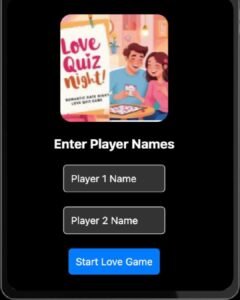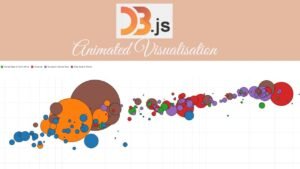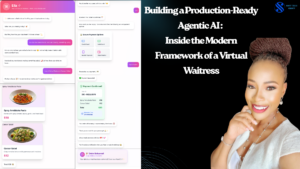Music LLMs are unlocking new frontiers in creativity and accessibility, empowering both professionals and hobbyists to explore music in unprecedented ways.
We have three Core Components which are:
- Representation: Music can be represented symbolically (e.g., notes, chords) or as raw audio signals.
- Model Architecture: Music LLMs often use transformer architectures, which excel at learning sequences and contextual relationships.
- Embedding: Notes, rhythms, and audio features are converted into numerical representations for the model to process.
The capabilities of a Music Language Model (Music LLM) span a wide range of applications, from music composition to analysis, making them versatile tools for musicians, composers, educators, and enthusiasts.
Here are the key capabilities:
1. Music Composition
- Melody Generation: Create new melodies in various styles, scales, or moods.
- Harmony and Chord Progressions: Generate harmonies and chord sequences that complement a given melody.
- Multi-Instrumental Compositions: Produce full arrangements with multiple instruments, from classical orchestras to modern bands.
- Style Replication: Mimic the style of specific composers, genres, or time periods.
2. Text-to-Music Generation
- Create music based on descriptive prompts, such as:
- “A relaxing piano melody for studying.”
- “An upbeat electronic track for a party.”
- This Enables users to convert ideas, emotions, or themes into music.
3. Music Analysis
- Structural Analysis: Break down compositions into sections (e.g., verse, chorus) and elements like tempo, key, and time signature.
- Genre Classification: Identify the genre of a piece of music.
4. Music Style Transfer
- Transform a musical piece from one style to another, e.g.:
- A classical piano piece into a jazz rendition.
- A pop song into an Rhythm and Blue genre.
5. Improvisation and Interaction
- Provide real-time user-provided input.
- Enable interactive tools for live recording or music jamming.
- Lyrics Generation: Write song lyrics in specified themes, and genres.
6. Lyrics and Vocals
- Vocal Synthesis: Generate synthetic singing in various styles and languages.
- Lyrics-Music Alignment: Match generated or provided lyrics to a melody.
7. Adaptive Music for Media
- Dynamic Scoring: Create music that adapts in real-time to game events or user interactions.
- Thematic Soundtracks: Automatically generate background music for films, podcasts, or commercials.
8. Music Education and Research
- Provide tools for learning music theory and composition.
- Generate examples and exercises for students, like chord progressions or rhythm patterns.
- Assist in musicological research by analyzing historical trends or stylistic patterns.
Below is how the Music AI Tool, Suno is used in a plethora of ways:
- Collaborative Composition: Co-create music with musicians by iteratively suggesting ideas or completing partial compositions.
- Cross-Modal Applications: Combine music with other media (e.g. uploading recorded music).
- Music Therapy: Personalize soundscapes for stress relief, meditation, or emotional healing.
- Creative Assistance: Help composers create music or experiment with new ideas.
- Music Education: Provide interactive tools for learning music theory and composition.
- Entertainment: Generate adaptive music for games, films, or virtual environments.





🎭 Theater of thought! Sprunki Phase stages creative revolutions.
You’ve mastered creative expression! For artists, Sprunki Incredibox is essential.
Thank you for your sharing. I am worried that I lack creative ideas. It is your article that makes me full of hope. Thank you. But, I have a question, can you help me?
Thanks for sharing. I read many of your blog posts, cool, your blog is very good.
Thanks for sharing. I read many of your blog posts, cool, your blog is very good.
Can you be more specific about the content of your article? After reading it, I still have some doubts. Hope you can help me.
Your point of view caught my eye and was very interesting. Thanks. I have a question for you.
Thanks for sharing. I read many of your blog posts, cool, your blog is very good.
Your point of view caught my eye and was very interesting. Thanks. I have a question for you.
Thank you for your sharing. I am worried that I lack creative ideas. It is your article that makes me full of hope. Thank you. But, I have a question, can you help me?
Your point of view caught my eye and was very interesting. Thanks. I have a question for you.
Your article helped me a lot, is there any more related content? Thanks!
Thanks for sharing. I read many of your blog posts, cool, your blog is very good.
Can you be more specific about the content of your article? After reading it, I still have some doubts. Hope you can help me.
where can i buy clomid pill how to buy cheap clomiphene buy clomiphene no prescription buying cheap clomid no prescription can i get clomid without a prescription cost cheap clomid without insurance where can i get clomiphene without dr prescription
Your point of view caught my eye and was very interesting. Thanks. I have a question for you.
More posts like this would add up to the online time more useful.
The vividness in this serving is exceptional.
order azithromycin 500mg online – purchase azithromycin pills buy metronidazole 200mg generic
rybelsus 14mg canada – order generic semaglutide 14 mg order periactin 4 mg generic
purchase domperidone generic – buy generic cyclobenzaprine for sale cost cyclobenzaprine 15mg
propranolol cheap – buy methotrexate sale order methotrexate 2.5mg pills
Your point of view caught my eye and was very interesting. Thanks. I have a question for you.
buy amoxicillin online – diovan 80mg canada combivent pills
buy azithromycin 500mg generic – buy tinidazole 300mg online bystolic cost
clavulanate price – https://atbioinfo.com/ purchase ampicillin online cheap
nexium 40mg for sale – anexa mate cheap esomeprazole 40mg
order warfarin 5mg online – anticoagulant buy hyzaar generic
oral mobic – https://moboxsin.com/ buy mobic 15mg sale
deltasone 10mg for sale – https://apreplson.com/ prednisone pills
best ed pills online – fast ed to take site best otc ed pills
brand amoxicillin – https://combamoxi.com/ amoxicillin medication
diflucan over the counter – https://gpdifluca.com/# fluconazole 200mg cost
Your point of view caught my eye and was very interesting. Thanks. I have a question for you.
brand cenforce 100mg – https://cenforcers.com/ order cenforce 50mg
tadalafil dapoxetine tablets india – https://ciltadgn.com/ cialis side effect
tadalafil no prescription forum – super cialis cialis after prostate surgery
order ranitidine 150mg generic – site order zantac 150mg online
order viagra in uk – https://strongvpls.com/ how to buy viagra or cialis
I am in fact happy to glitter at this blog posts which consists of tons of profitable facts, thanks for providing such data. neurontin 300 opiniones
More delight pieces like this would insinuate the web better. where to buy neurontin without a prescription
Thanks on sharing. It’s first quality. https://ursxdol.com/get-cialis-professional/
More posts like this would make the online space more useful. metoprolol pills
I’ll certainly carry back to review more. https://aranitidine.com/fr/prednisolone-achat-en-ligne/
Your point of view caught my eye and was very interesting. Thanks. I have a question for you.
Proof blog you be undergoing here.. It’s obdurate to assign elevated worth script like yours these days. I truly comprehend individuals like you! Take care!! https://ondactone.com/product/domperidone/
This is the stripe of glad I get high on reading.
brand levofloxacin 250mg
More peace pieces like this would urge the интернет better. https://sportavesti.ru/forums/users/ffdmx-2/
Your article helped me a lot, is there any more related content? Thanks!
forxiga 10mg without prescription – https://janozin.com/# forxiga 10mg sale
buy xenical without a prescription – https://asacostat.com/ orlistat online
I am in truth enchant‚e ‘ to glitter at this blog posts which consists of tons of worthwhile facts, thanks representing providing such data. https://lzdsxxb.com/home.php?mod=space&uid=5112954
Your article helped me a lot, is there any more related content? Thanks! https://accounts.binance.com/register?ref=P9L9FQKY
Can you be more specific about the content of your article? After reading it, I still have some doubts. Hope you can help me.
Your point of view caught my eye and was very interesting. Thanks. I have a question for you.
Your point of view caught my eye and was very interesting. Thanks. I have a question for you.
Thank you for your sharing. I am worried that I lack creative ideas. It is your article that makes me full of hope. Thank you. But, I have a question, can you help me?
I don’t think the title of your article matches the content lol. Just kidding, mainly because I had some doubts after reading the article.
You can shelter yourself and your ancestors by being alert when buying pharmaceutical online. Some pharmaceutics websites manipulate legally and provide convenience, privacy, sell for savings and safeguards as a replacement for purchasing medicines. buy in TerbinaPharmacy https://terbinafines.com/product/keppra.html keppra
More text pieces like this would make the интернет better. levitra 20 mg durГ©e d’action
Thanks for sharing. It’s top quality.
I don’t think the title of your article matches the content lol. Just kidding, mainly because I had some doubts after reading the article.
Your article helped me a lot, is there any more related content? Thanks! https://accounts.binance.com/register?ref=P9L9FQKY
Your article helped me a lot, is there any more related content? Thanks! https://www.binance.info/register?ref=IJFGOAID
I’ll right away grasp your rss feed as I can’t in finding your e-mail subscription hyperlink or e-newsletter service. Do you have any? Please permit me realize in order that I could subscribe. Thanks.
Can you be more specific about the content of your article? After reading it, I still have some doubts. Hope you can help me. https://www.binance.info/register?ref=IXBIAFVY
Thank you for your sharing. I am worried that I lack creative ideas. It is your article that makes me full of hope. Thank you. But, I have a question, can you help me?
You can definitely see your enthusiasm within the paintings you write. The sector hopes for even more passionate writers such as you who are not afraid to mention how they believe. All the time go after your heart.
Yo, check out yy6gamedownload! Found some fire games here, easy downloads too. Definitely worth a look if you’re tryna find new stuff to play. No cap!
Finally found the official pinas777login page! Had a hard time remembering the URL. Going to claim my free spins. Let’s get those spins! Claim yours now: pinas777login
Excellent read, I just passed this onto a colleague who was doing some research on that. And he just bought me lunch as I found it for him smile So let me rephrase that: Thank you for lunch!